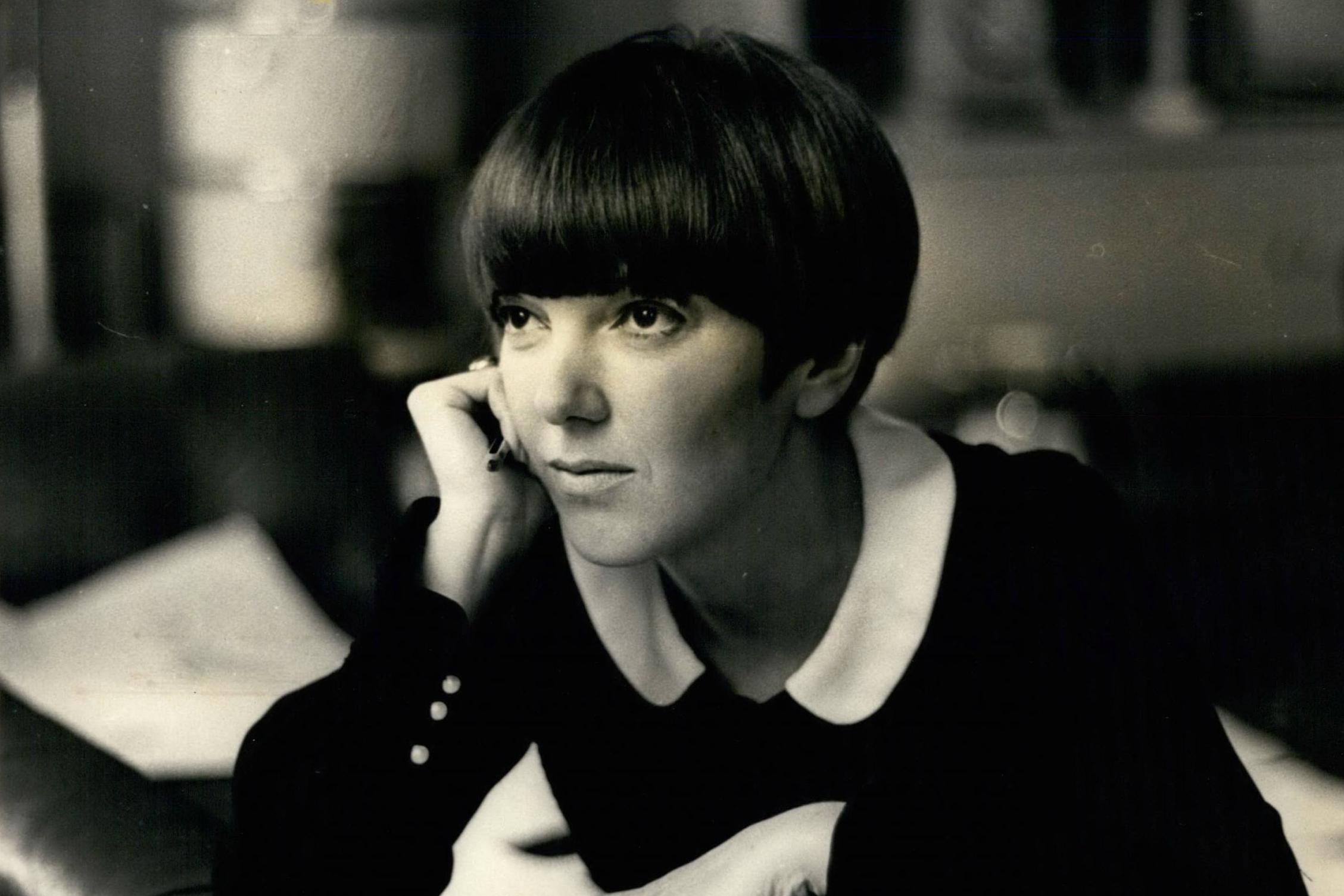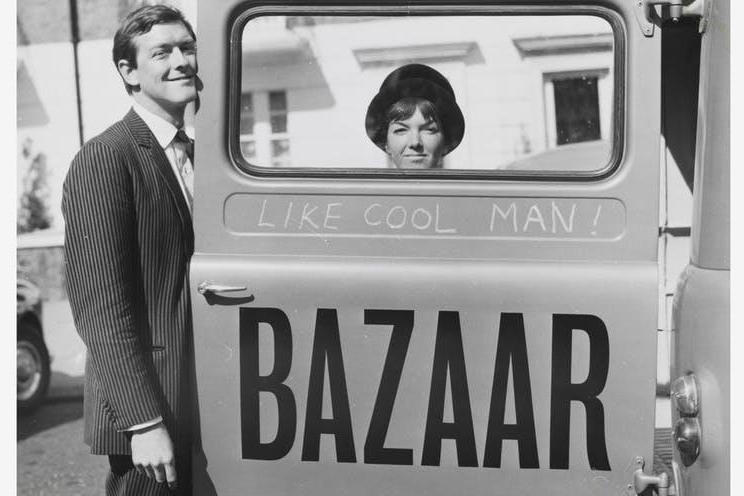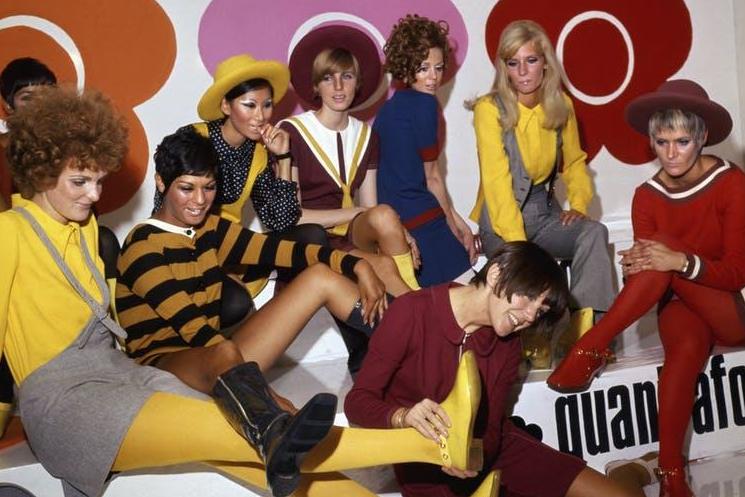The Independent's journalism is supported by our readers. When you purchase through links on our site, we may earn commission.
Mary Quant: fashion’s inspirational icon for the #metoo era
When fashion needs feminism more than ever, a V&A exhibition in London celebrates one of the industry’s groundbreakers, Mary Quant

Your support helps us to tell the story
From reproductive rights to climate change to Big Tech, The Independent is on the ground when the story is developing. Whether it's investigating the financials of Elon Musk's pro-Trump PAC or producing our latest documentary, 'The A Word', which shines a light on the American women fighting for reproductive rights, we know how important it is to parse out the facts from the messaging.
At such a critical moment in US history, we need reporters on the ground. Your donation allows us to keep sending journalists to speak to both sides of the story.
The Independent is trusted by Americans across the entire political spectrum. And unlike many other quality news outlets, we choose not to lock Americans out of our reporting and analysis with paywalls. We believe quality journalism should be available to everyone, paid for by those who can afford it.
Your support makes all the difference.Tickets have just gone on sale for the V&A London’s Mary Quant exhibition, which opens its doors on 6 April 2019. The timing, whether through luck or curatorial savvy, feels perfect. Feminism and fashion need Quant now more than ever.
High street fashion retailer Topshop is in the spotlight following the recent #pinknotgreen social media backlash and boycott. Linked to this, there are the allegations of sexual harassment directed at Philip Green, the chair of retail giant Arcadia, which owns Topshop. And let’s not forget the long list of allegations made against the fashion photographer Terry Richardson. In 2017, industry blog Business of Fashion reported that only 40.2 per cent of major design houses were headed by women.
The V&A’s retrospective stands out because Quant is one of the few female designers to be the focus of such an exhibition. Christian Dior, Cristóbal Balenciaga, Alexander McQueen, Yves Saint Laurent – the list of designers to be honoured with blockbusting UK exhibitions in recent years is male dominated. The term “glass runway” was coined by sociologist Allyson Stokes in 2015 to describe how, regardless of their talent, female designers rarely achieve the level of plaudits and power granted to male designers. While there is no shortage of slogan t-shirts proclaiming feminism, a long-running and subtle imbalance in the fashion industry is becoming apparent. Fashion is primarily consumed by women yet often created and controlled by men.
Fun revolution
From the opening of the Bazaar boutique on London’s Kings Road in 1955, Quant showed how a woman could retain creative control, power and personal integrity whilst being both commercially successful and a lot of fun. Quant’s clothing was playful and cocked a snook at the conservative and stifling expectations placed upon young women’s post-World War II wardrobes. It was a new way of dressing for a new type of liberated woman. It wasn’t just the clothes that were refreshingly different – so was Quant’s way of making and selling. She was unashamedly mass market.

Quant began to sell clothing wholesale in 1961 and founded the Ginger Group diffusion line in 1963. In the catalogue for the 1973 Museum of London exhibition of her designs Quant stated: “Fashion must be created from the start for mass production with full knowledge of mass production methods.” It was an approach that meant a little piece of swinging West London could find its way into a wardrobe in West Bromwich.
The V&A’s decision to source 35 of the objects for the exhibition from members of the public reflects the broad democratising impact of Quant. For a generation of women, their Mary Quant purchase – whether it was colourful tights, a lipstick or a Butterick dress pattern – was their prized first taste of a new kind of fashion, designed for them by someone who understood them.
She captured the spirit of youthful rebellion, liberation and desire for the new and different while living and selling it wholesale. If Jean Shrimpton’s sensational arrival at the Melbourne Derby Day in 1965 was akin – as a local newspaper described it – to the appearance of a “petunia in an onion patch”, Quant’s mass-market miniskirts were like a sea of daisies dancing across the whole fashion allotment.
Her parents were hard working Welsh school teachers, born into mining communities who had lived through the hardships of the 1920s and 1930s. They longed for Quant to train as a teacher and held a deep suspicion of the art school education she craved and, ultimately, got.

Quant’s motivations for designing clothes were perhaps what made her so appealing – she simply designed the clothes she wanted to sell but couldn’t find elsewhere. There was also a practicality to her designs – it was clothing that was easy to move in: her colourful opaque tights made the bottom skimming mini-skirts almost respectable, her groundbreaking PVC raincoats kept the wearer dry and stylish, and separates from the Ginger Group collections could be combined throughout the seasons. Quant was a mod in the truest sense – modernising clothing for the modern city and lifestyle that came along with it.
There was a sexual liberation and confidence in Quant’s designs too. Bare limbs, Lolita dresses, skinny rib sweaters, hot pants and kinky boots were the uniform of a female-controlled sexual revolution. Her 1967 interview as part of The Guardian’s “Permissive Society” series remains, 51 years later, not for the prudish. She shocked the establishment when she spoke of her appreciation for “good pornography”, told the press how her husband had trimmed her pubic hair into a heart shape and celebrated how the pill had placed women “in charge”.
Critics of Quant’s feminist fashion are quick to point out that she built her career with the backing of two wealthy and influential men: her aristocratic husband, Alexander Plunket Greene and the entrepreneur, lawyer and photographer, Archie McNair. Yet while they bought some finance, business acumen and promotional flair, it was Quant’s design talent, tenacity and thorough knowledge of female consumers’ desires that held the key.
Quant’s singular creative vision and strong voice are what make her a refreshing and still revolutionary inspiration for fashion lovers post-metoo.
Jenny Gilbert is a lecturer in design at De Montfort University
Join our commenting forum
Join thought-provoking conversations, follow other Independent readers and see their replies
Comments